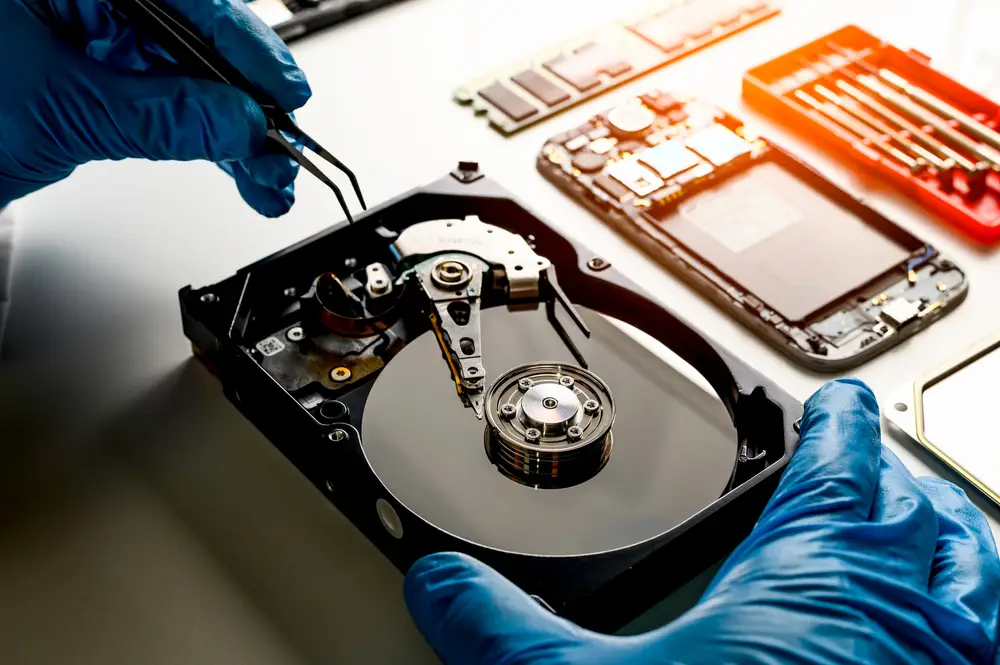Experiencing a hard drive failure can be a nightmare, especially if it contains critical personal or business data. Fortunately, data recovery from a failed hard drive is possible with the right steps and precautions. This guide provides a detailed walkthrough to help you recover your valuable information safely and effectively.
Step 1: Assess the Situation
Identify the Type of Failure:
- Physical Failure: Noise like clicking, grinding, or buzzing may indicate mechanical damage.
- Logical Failure: Issues such as corrupted files or an inaccessible drive generally suggest software problems.
Understand the Risks: Attempting to recover data on your own can lead to permanent data loss. Assess the importance of the data and consider consulting with a professional if the data is highly valuable.
Step 2: Stop Using the Failed Drive
To prevent further damage and data loss, immediately stop using the failed hard drive. Do not install new software, save additional files, or attempt to open existing files on the drive.
Step 3: Create a Disk Image
Tools You Need:
- A reliable data recovery software (e.g., DDRescue, Clonezilla)
- An external hard drive with sufficient storage space
Process:
- Connect the failed hard drive to another computer as a secondary drive.
- Use the data recovery software to create a bit-by-bit disk image of the failed drive.
- Store the disk image on the external hard drive.
Creating a disk image is a non-destructive process that minimizes the risk of data loss during the recovery process.
Step 4: Recover Data from the Disk Image
Once you have the disk image, you can perform the data recovery without further stressing the failed hard drive. Use data recovery software capable of reading from disk images (e.g., Recuva, Stellar Data Recovery).
- Open the recovery software and choose to recover files from the disk image.
- Select the types of files you want to recover and the destination for the recovered data.
- Allow the software to scan and recover the data.
Step 5: Consult a Professional at Layer Logix
If the steps above are outside your comfort zone or if the data recovery attempt proves unsuccessful, consulting a professional data recovery service like Layer Logix is highly recommended. Layer Logix offers expert data recovery services tailored to handle even the most challenging recovery scenarios, including physically damaged drives.
At Layer Logix, we employ advanced recovery techniques and operate within secure, clean room environments to ensure the highest recovery success rates. Our team of experienced technicians is equipped to recover data from all types of storage media under various data loss circumstances.
Why Choose Layer Logix for Data Recovery:
- Expertise in Complex Recoveries: From logical failures to severe mechanical damages, we’ve got the expertise.
- State-of-the-Art Facilities: Our clean rooms and advanced tools minimize the risk of data corruption or loss during recovery.
- Confidential and Secure: We prioritize your data’s security and confidentiality throughout the recovery process.
For more information on how we can assist you or to start a recovery case, please visit our Data Recovery Services page. Don’t risk permanent data loss — let the professionals at Layer Logix help you retrieve your valuable information.
Prevention Tips
- Regular Backups: Schedule regular backups to multiple storage devices or cloud services.
- Monitor Hard Drive Health: Use tools like S.M.A.R.T. (Self-Monitoring, Analysis, and Reporting Technology) to monitor your drive’s health.
- Handle with Care: Physical shocks can damage hard drives. Handle storage media gently to avoid accidents.
Conclusion
Recovering data from a failed hard drive can be challenging, but following these steps can increase your chances of getting your data back. Always consider the value of the data and seek professional help when necessary to ensure the best possible recovery outcomes.
For more insights and assistance with data recovery, visit our website or contact our support team. We’re here to help you secure and recover your valuable data efficiently and safely.

